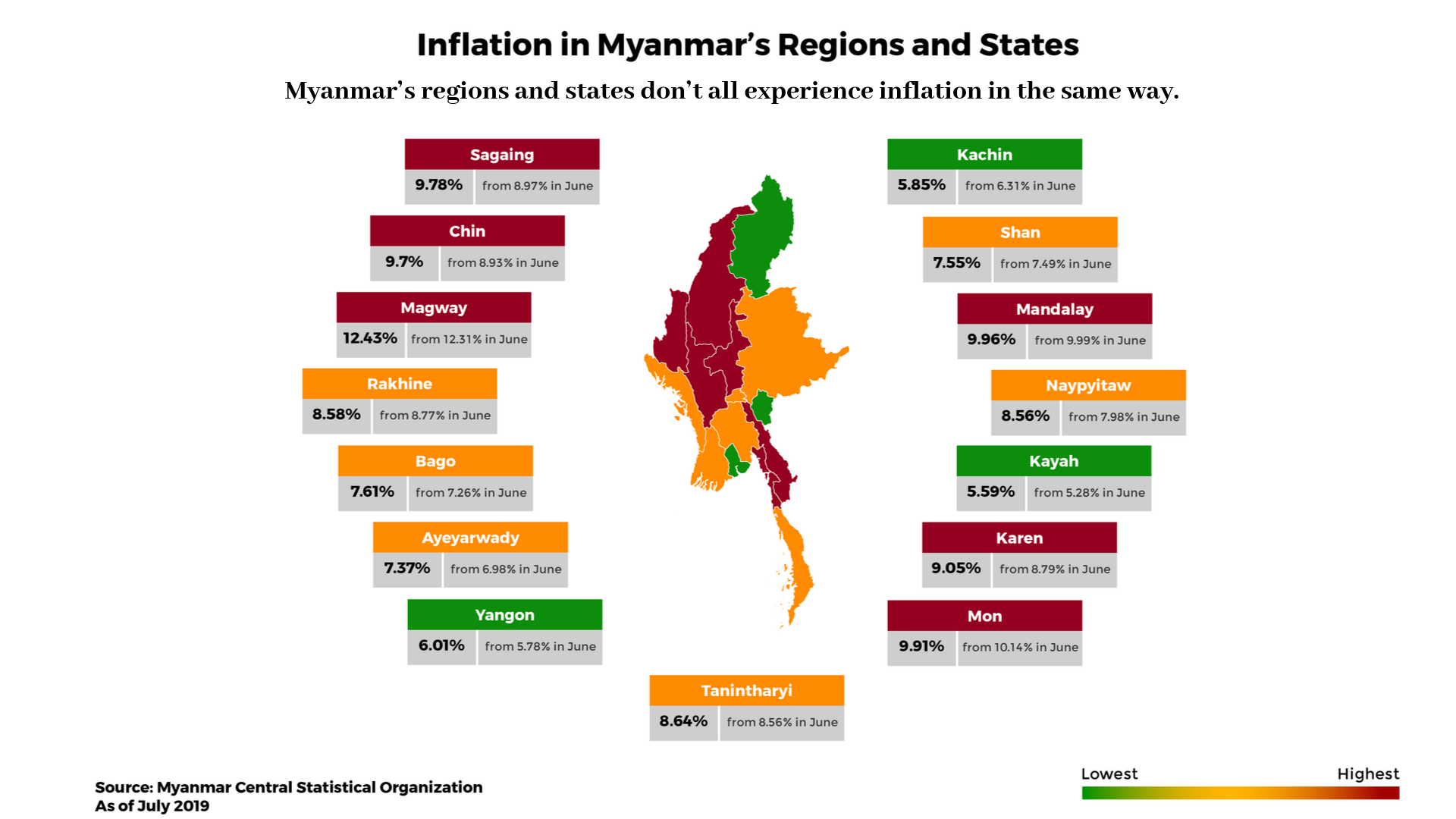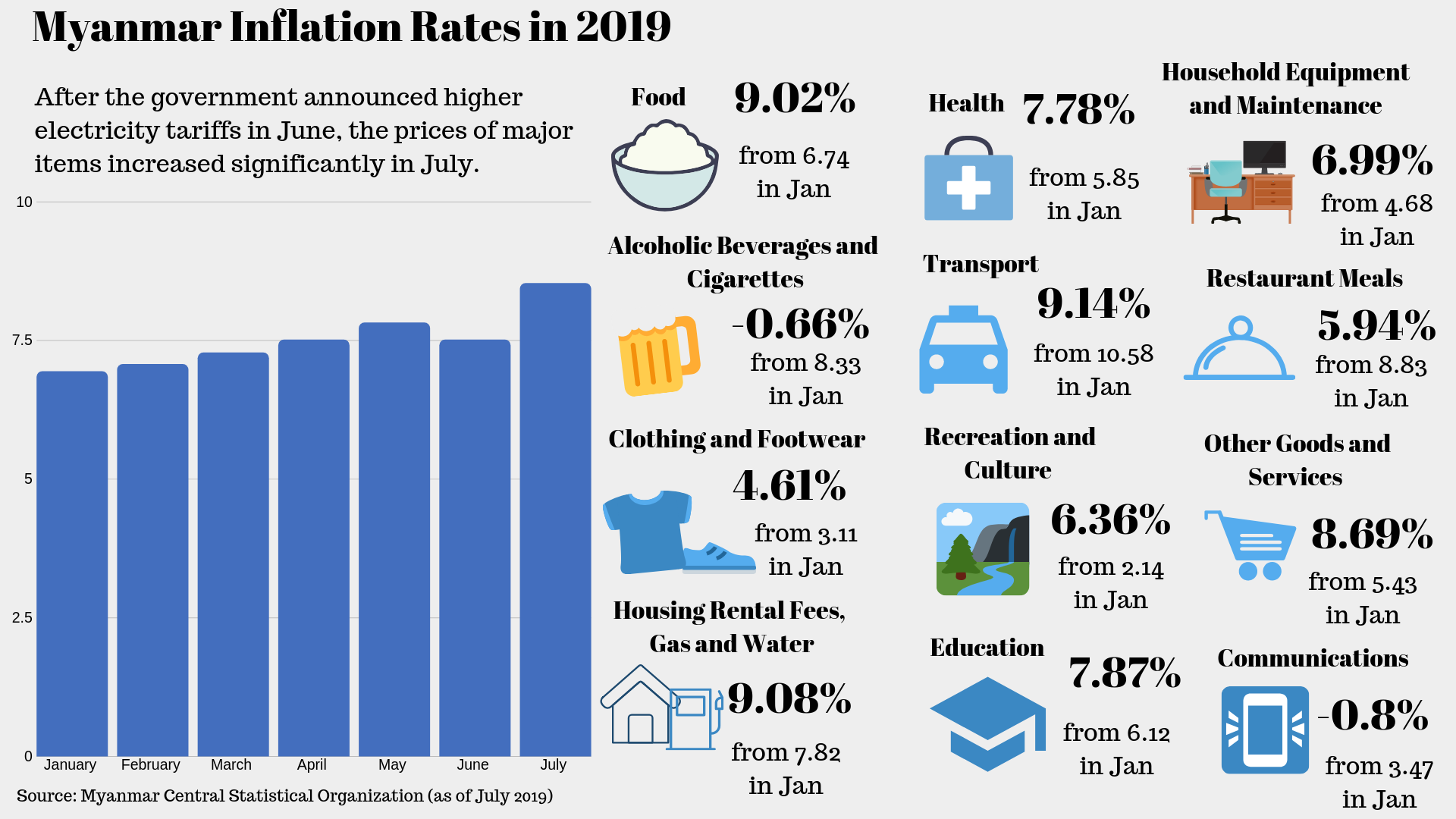YANGON—Improving people’s lives was a key goal of the policy platform announced by Daw Aung San Suu Kyi’s National League for Democracy (NLD) ahead of the 2015 election. To achieve this, the party vowed to streamline public finances, reduce taxes and achieve monetary stability through economic reform.
However, under the State Counselor’s administration, inflation and the consumer price index (CPI) have risen at their fastest pace in years, reducing the value of money and increasing day-to-day expenses while the daily minimum wage remains the lowest in the region.
Furthermore, from 2016 through 2019, Myanmar had the highest average inflation rate among ASEAN countries (measured in July of each year). The Asian Development Bank forecasts Myanmar’s average inflation rate for 2019 at 6.8 percent—the highest in ASEAN, with the Philippines a distant second at 3.8 percent. Next year, Myanmar’s average inflation rate is forecast to reach 7.5 percent, with Vietnam second at 3.8 percent.
According to a monthly report by the Myanmar Statistical Information Service (MSIS), a department of the Planning and Finance Ministry, the rapid increase in inflation in Myanmar over the past few years is due to three significant factors: the depreciation of the kyat against the US dollar, flooding, and rising petrol costs.
Myanmar’s annual inflation rate stood at 10.59 percent when the NLD took office in July 2016, but had declined to 4.91 percent by July 2017. In 2018, however, the economy was hit by rapid inflation due to the sharp depreciation of the kyat against the US dollar.
During the seven months from January to July this year, the inflation rate saw another significant increase, rising to 8.35 percent from 5.02 percent in 2018 due to the continued depreciation of the kyat and the imposition of higher electricity tariffs.
During Daw Aung San Suu Kyi’s administration, the CPI—which measures the average change over time in the price of a basket of consumer goods and services—has also risen significantly, meaning people must pay more to cover their basic expenses each year.
The CPI is usually calculated by examining prices across eight major consumer categories: food and beverages, housing, clothing, transportation, medical care, recreation, education and communications.
In July 2019, Myanmar’s CPI stood at nearly 160, by far the highest level under Daw Aung San Suu Kyi’s administration.
From 2016 to 2019, the prices of such goods and services as food, clothing, footwear, housing rental, furnishing, gas, water, healthcare, household equipment and maintenance, and recreation and cultural activities increased significantly. The cost of cigarettes, alcoholic beverages and communications declined significantly.
The high inflation has also reduced people’s spending power on essential items, with workers who earn the minimum wage spending more than 85 percent of their income on food, rent and transportation.
Workers are bracing for even higher costs, as the government announced higher electricity tariffs in June, sending prices rising significantly in July. For some, the minimum wage can no longer support basic living expenses.
In the following infographics, The Irrawaddy breaks down all the data contained in the MSIS reports from 2016-2019 (a total of 42 reports) to identify the annual inflation rate, year-on-year inflation, consumer price index and inflation in the regions/states, and to make comparisons between the members of ASEAN and the way inflation has affected individual commodity groups.

Scroll your mouse over the visuals for more.
Hover your mouse over the visuals for more.
Scroll your mouse over the visuals for more.

Hover your mouse over the visuals for more.
#IRWLaborRights
















